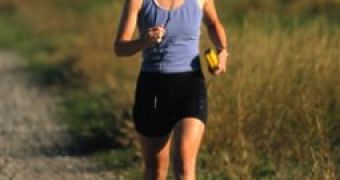Practicing sports periodically, even if this means going up the stairs instead of using the elevator or leaving the car for the bike means more than fighting diseases. Sports also improves memory and learning.
Researches found more neurons in the hypothalamus nucleus (involved in memory) of the sports-practicing individuals than of the sedentary ones. Just walking 45 minutes daily thrice a week improves mental capacities, like planning and coordination.
It is also known that active persons live more and have a healthier life than the sedentary ones do. But exercising is also a source of pleasure; it increases the level of certain hormones, like endorphins, which acts like natural analgesics. The practice of a sport also increases self-esteem, decreases anxiety and increases the capacity of facing stress.
Researches also showed that sports prevent impotence in men, even when started after 50 years, as it improves circulation (erection is an issue of blood circulation) and makes the endocrine system release dopamine and serotonin. Moreover, men practicing sports overcome the average time of an intercourse duration.
Sports also increase the release of testosterone, the male sexual hormone, from the testicles. This hormone boosts the number of immune white cells and red cells in the blood, preventing infections.
Bones also benefit from this; in childhood, their growth is boosted, and during adulthood, practicing sports impedes the loss of bony mass. It also keeps the structure and function of the articulations. They get more lubricated, flexible and less prone to degenerating arthropathies (rheumatism), even in old age.
Practicing sports also decreases by 20-40 % the risk of colon cancer. Tumors are favored by two hormones: insulin and estrogen. Exercising decreases the levels of these hormones. In the case of colon cancer, the positive effect is also due to the increase in intestinal mobility and this way toxins remain less in contact with the colon.
It's clear that sports improves heart's health. Sportsmen are less exposed to cardiovascular diseases. Sports increase the good cholesterol, decrease hypertension, control type II diabetes. The heart of a sport practicing person makes less effort in accomplishing the same amount of work. Not to mention the increased lung capacity of that individual.
Still, the key is constant physical exercise. Even athletes interrupting training do not keep measurable health effects in the long run. After 12 weeks of break, elite athletes can lose 50 % of their aerobic training capacity.
After 35 years, medical checks must be considered for choosing a sport, in order to prevent some possible problems. When choosing a sport, age, preferences, addictions, physical and psychical built must be considered.
Sports that can be practiced for the entire life are swimming, biking, tennis, gulf, race, march and mountaineering, while others, like football, soccer, rugby, karate, judo, or hockey just by some and at determined ages.
To see how sports make you lose weight, let's look first at how much calories you spend without making sports in a day: _ sleeping 70/hour _eating 96 _standing upright 108 _driving a car 160 _using the vacuum cleaner 250 _cleaning the windows 300
This is the list of how much calories you burn in one hour of practicing some sport:
_gulf (if you walk) 300-360 _aerobic gymnastics _ 360-400 _swimming 360-480 _tennis 480 _biking (at 20 km (12 mi/hour) 600 _jogging 600 _walking at 5 kmph (3 miph) 300 _walking at 8 kmph (5 miph) 480
The effort done while practicing sports is of two types:
_aerobic. The stamina exercise is basically aerobic and characterized by a gradual effort, but continuous, like in swimming, marathon, race, cross-country skiing, or biking. The heart, in this case, pumps less blood to the muscles.
_anaerobic - in strength exercises, like weight lifting, body building, speed races, and spear launching. The physical activity lasts less, but the effort is extremely intense during short intervals.

 14 DAY TRIAL //
14 DAY TRIAL //